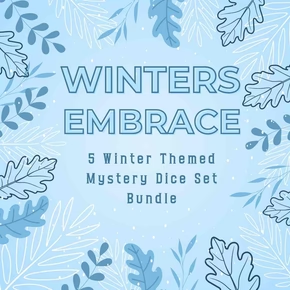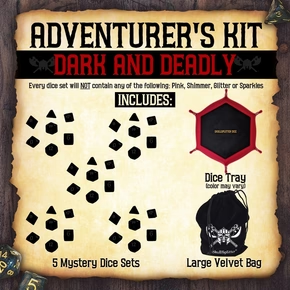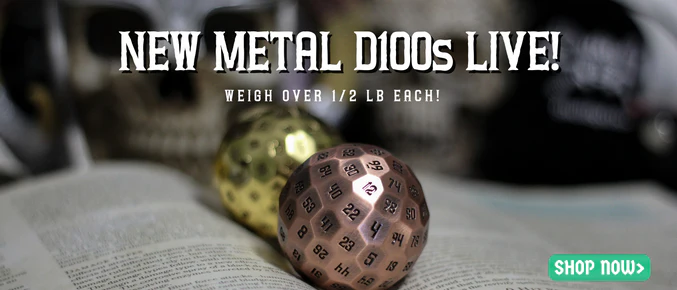Magic Items 101
An Analysis of every Magical Sword, Trinket, and Bauble in 5e D&D
From simple +1 swords to all-powerful artifacts, your average DnD player is going to encounter a lot of magical bits and bobs throughout their adventures and your average DM must create and manage far more. But just how rare is that ring of protection? What’s statistically better, fire protection or cold protection? Well, we’ve done a deep dive on all the items currently available (as of June 2021) in 5e from official D&D sources and compiled them up for you. So, if you’re a DM looking for tips on his party’s next cool bit of loot or a player trying to explain that a damage immunity isn’t that busted then stick around as we go through everything you need to know.
Table of Contents:
The Items Themselves
Our data was compiled from every current official 5e book release. There is a minor caveat there in that we didn’t comb through every scrap of Adventurer’s League content, but they almost exclusively pull from the other official releases anyway. And if you came here just looking for the item list you can find our lovely magic items 5e database HERE
Magic Item Rarity
Let’s start off with item rarity, which is a solid power gauge and metric when designing and considering magic items.

There’s no hard and fast rules for what differentiates a common item from an uncommon one, or a rare item from a very rare item, but after analyzing them all I think I can read into the designer’s intentions a bit.
Common Items - Very minor or situational effects that are largely inconsequential. A lot of the items you find here have purely cosmetic features with no in-game mechanical effect. Or if they do have effects that matter, it is usually something that could be duplicated by a 1st or 2nd level spell.
Uncommon Items - Simple but useful, usually doing one simple thing. You’ll find the bottom rung of most +1 items here and it’s generally great tier 1 loot that’s useful up through tier 2. Generally speaking, everything here is safe for a DM to hand out as loot in any adventure, with a couple iffy things like a flying speed or certain minor immunities.
Rare - Rare items usually either add a solid bonus, or a combination of a couple smaller features. You’ll find the middle rung +2 items here and usually rare items fit well as major adventuring rewards during tier 1, more frequent loot in tier 2, and should still be useful up through tier 3. DM’s should be just a little cautious about handing out rare items early on, but giving out multiple rare items throughout a long adventure shouldn’t cause problems.
Very Rare - Very rare items usually do multiple things or a single very powerful thing. You’ll find the high rung +3 items here and most very rare items provide abilities that can break early adventures. Very rare items fit best as major adventuring rewards during tiers 2 and 3, and should still be relevant all the way up through tier 4. I’d advise DM’s to never give out very rare items during tier 1 and should only give them out cautiously in situations that call for major rewards in the following tiers, such as at the end of major plot arcs.
Legendary - Legendary items represent the top rung loot and are immensely powerful. You’ll find +4 and even +5 items here and lore-relevant items such as named or items. Legendary items are often the focus of entire campaigns and should only be considered as a loot reward in tier 4, possibly as a major story arc reward in tier 3. Be very cautious about introducing any legendary items to your games, as they can be adventure warping.
Artifact - Artifacts are less loot as much as they are plot devices, as any campaign with an artifact will typically revolve around the artifact itself as a character or as a Mcguffin. A little more than a third of all the artifacts are sentient items with wills of their own, and most of the other artifacts are unpredictable or hard to control. Artifacts should never be simple “loot”, but that doesn’t mean the players can’t get a hold of one so long as you’re ok with the adventure being warped around it.
As you can see, more than a quarter of all magic items are rare, followed closely by uncommon. I find that this provides a bit of insight into 5e’s priorities when it comes to tiers of play. Common items are usually too small or situational to be particularly relevant, and the very rare, legendary, and artifacts are too powerful to slot into most tier 1 or 2 adventuring situations. Instead the majority of items are uncommon or rare, to provide the most options for those first 2 tiers of play that most players are adventuring at.
Magic Item Restrictions
Next let’s analyze what restrictions 5e places on who can use certain magic items, which took an interesting turn as 5e has diverted hard from earlier editions.

Firstly, almost every restriction is in one form, or another spellcasting based. Most of the restrictions in the “multiple” category refer to multiple spellcasting classes that could potentially use it, which has been further subdivided into either specific groups of spellcasting class or individual spellcasting classes.
We also get some very specific lore restricted items like the guild items out of Ravnica, or the mark items out of Eberron. There’s also a few of the “generic bonus” items for specific classes rounding out a lot of the single class restrictions.
What’s interesting is that there’s almost no race or alignment restricted items to be found. The only official race restricted item we could find in the whole system was the “dwarven thrower” specifically only usable by dwarves. And while the spellcasting classes have some item restrictions, there’s literally no item usable only by fighters, or only by barbarians or any of the martial classes.
This means that if you decide to take a crack at making your own items, you should avoid similar restrictions if you want to line up with the 5e design. It makes a lot of sense really, why would you want items that only a tiny percentage of players could actually use? The spellcasting restrictions do make sense though, as they prevent a single magic item from taking the place of a full dip of multiclassing.
Magic Items by Source Book
Next let’s take a look at where all these magical items are coming from.

It should be no surprise that the Dungeon Master’s Guide contributed nearly half of all the 5e magic items, but I was a bit surprised to learn the Explorer’s Guide to Wildemount was tied for 2nd with Tasha’s Cauldron of everything. That means despite being a setting book, Wildemount represents one of the single largest magic item supplements currently in the game and should be a top pick if you’re looking for more enchanted goodies.
Magic Item Damage Protection
Statistically interesting for making your own spells, monsters, and other sources of damage, let’s take a look at what damage types are most often resisted by magic items.

This includes full immunities but mostly consists of resistances, and it’s a little deceptive at first due to the massive “multiple” category there. A lot of items either grant protection against a type of your choice, or they’ll often check against the “elemental” categories of fire, cold, lightning, and acid. Sometimes you'll get special protections against the “physical” damage types of bludgeoning, piercing, and slashing as well. Still, from this you can see that fire and cold are the most often resisted alone, followed by poison, with distant runners up of psychic, acid, and force.
Magic Item Damage Dealt
Now that we’ve looked at what damage types magic items protect against, let’s look at what damage types they’re dishing out.

The chart is pretty deceptive here, as it’s only counting weapons that exclusively deal a single damage type as anything but “multiple”. By far though, the most common damage type other than the base physical types (bludgeoning, piercing, slashing) is fire. Everybody likes to make flaming swords and there’s a ton of them. Cold and poison are also common, as is necrotic because making spooky evil weapons just makes sense. By far the least used damage type across the board was thunder, so if you’re looking to make some unique weapons I recommend bringing the thunder!
Magic Items by Type
Finally, let’s take a look at this big old pile of loot and sort it out statistically.

So, our loot hoard is dominated by the ambiguous category of “miscellaneous”, which includes all the little magic rocks, bits, baubles, and basically everything that isn’t worn, wielded, or eaten.
Weapons are (no surprise) the next largest category, and past that most of our categories are just about the same size. Potions and Elixirs are quite nearly the same category as consumables by the way, consumables just add in the odd single use items that you don’t technically drink as a potion.
After going through them all, you can pick out a lot of the design elements from a balance perspective. Anything that would improve mental stats (mostly) becomes a helm, so you can’t double up with double hats. A lot of skills are tied to gloves so you specifically can’t double up on them, and a lot of the simple numerical bonuses are placed on rings.
If you are thinking of making your own magic items, I recommend using these stats to figure out what isn’t already common in 5e, and filling that need! From this we can see that rods, gloves, and shields are strangely underrepresented, get on it item designers!
------------
Enjoy this Guide? You May Also Like:
Need a New Dice Set? Check out our DND Dice here. They are perfect for every gamer as a gift or just treating yourself!
Thinking about other classes? Check out our giant list of D&D 5e Tools and Tips here.
New to find a D&D Group? Check out our guide on How to Find a D&D Group.
DO I GIVE THEM THE RED POTION OR THE REALLY RED POTION? Know before you throw with our Healing Potions in DND 5e Guide

Disclaimer
Last updated: January 27, 2019
The information contained on www.SkullSplitterDice.com website (the "Service") is for general information purposes only.
www.SkullSplitterDice.com is a participant in the Amazon Services LLC Associates Program, an affiliate advertising program designed to provide a means for sites to earn advertising fees by advertising and linking to Amazon.com. (source: Section 5)
Blueshift Nine, LLC assumes no responsibility for errors or omissions in the contents on the Service.
In no event shall Blueshift Nine, LLC be liable for any special, direct, indirect, consequential, or incidental damages or any damages whatsoever, whether in an action of contract, negligence or other tort, arising out of or in connection with the use of the Service or the contents of the Service. Blueshift Nine, LLC reserves the right to make additions, deletions, or modification to the contents on the Service at any time without prior notice.
Blueshift Nine, LLC does not warrant that the Service is free of viruses or other harmful components.
Affiliate disclaimer
This affiliate disclosure details the affiliate relationships of Blueshift Nine, LLC with other companies and products.
Some of the links are "affiliate links", a link with a special tracking code. This means if you click on an affiliate link and purchase the item, we will receive an affiliate commission.
The price of the item is the same whether it is an affiliate link or not. Regardless, we only recommend products or services we believe will add value to our readers.
By using the affiliate links, you are helping support the Service, and we genuinely appreciate your support.
Affiliate advertising programs that the Service uses are:
- Amazon Services LLC Associates Program
- As an Amazon Associate, I earn from qualifying purchases.
- Blueshift Nine, LLC is a participant in the Amazon Services LLC Associates Program, an affiliate advertising program designed to provide a means for sites to earn advertising fees by advertising and linking to Amazon.com or endless.com, MYHABIT.com, SmallParts.com, or AmazonWireless.com.
- Pages on this Service may include affiliate links to Amazon and its affiliate sites on which the owner of this Service, Blueshift Nine, LLC, will make a referral commission.


